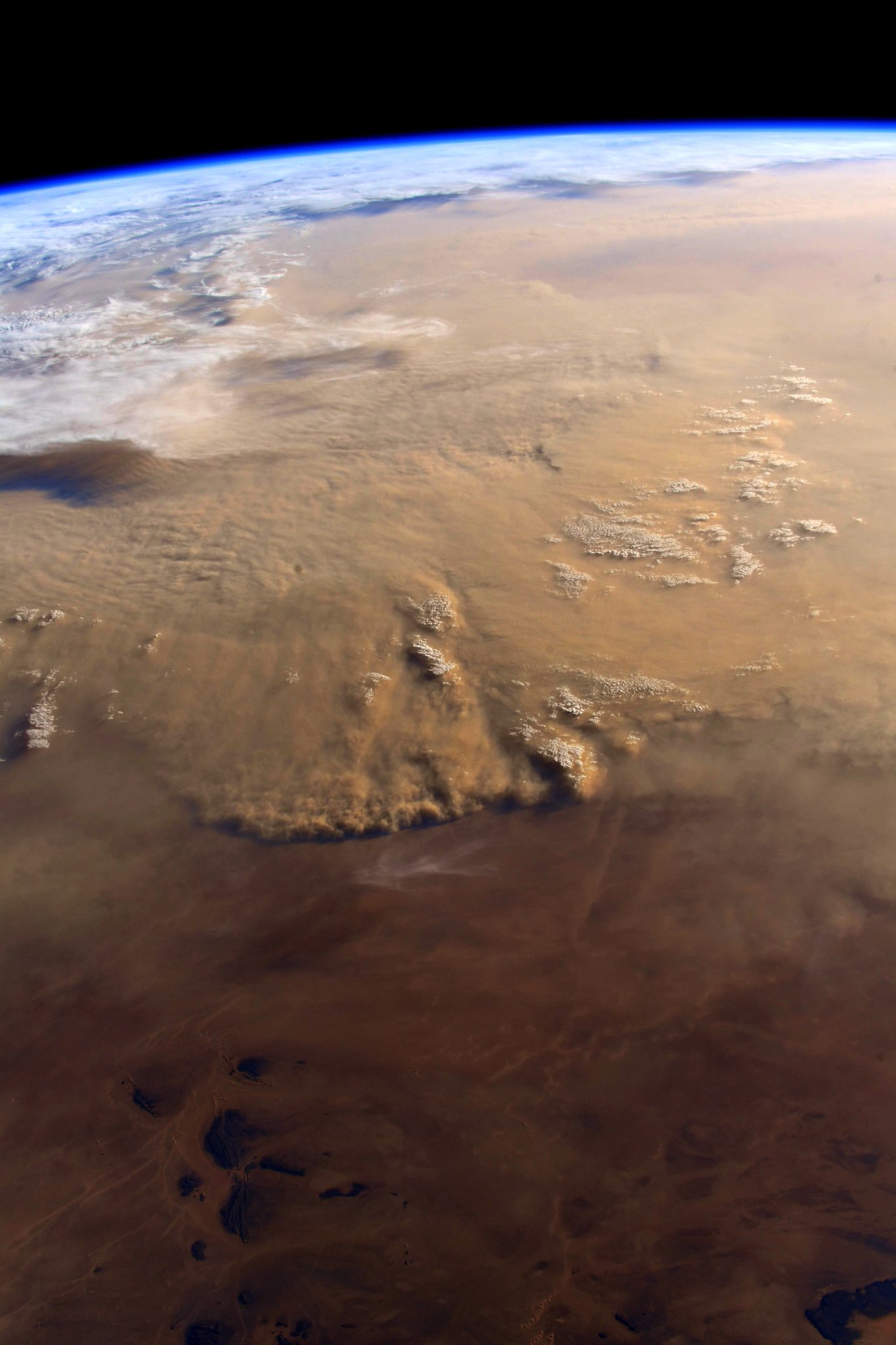[:ja]リッキー・アーノルド宇宙飛行士がISSから撮影したサハラ砂漠の大規模な砂嵐です。

砂嵐は土壌を剥ぎ取る、農地の生産性を下げる、車両や航空機の視界を遮るなどのマイナスの効果がありますが、驚くことに、プラスの効果もあります。熱帯雨林には鉄分などが乏しいのですが、大西洋を渡ってくるサハラ砂漠の豊富なミネラル分を含んだ砂により、中南米アマゾンなどの熱帯雨林が養分を補給しているという構図もあります。
地上の様子はこちらです。
参考文献: Ricky Arnold’s Tweet
ウェブ地球儀で地球俯瞰画像を見る: LiVEARTH
[Earthview Wonders] No.563: Sahara’s Sandstorm
Astronaut Ricky Arnold captured from ISS the massive sandstorm in Sahara Desert.

Dust storms cause soil loss from the dry lands, reduced agricultural productivity, damage of young crop plants by abrasive effect, and reduced visibility affecting aircraft and road transportation. Surprisingly, dust can also have beneficial effects where it deposits: Central and South American rain forests get most of their mineral nutrients from the Sahara; iron-poor ocean regions get iron; and dust in Hawaii increases plantain growth.
The local scenery on the ground is as follows.
Reference: Ricky Arnold’s Tweet
See earthview photo gallery with web-globe: LiVEARTH[:en][Earthview Wonders] No.563: Sahara’s Sandstorm
Astronaut Ricky Arnold captured from ISS the massive sandstorm in Sahara Desert.

Dust storms cause soil loss from the dry lands, reduced agricultural productivity, damage of young crop plants by abrasive effect, and reduced visibility affecting aircraft and road transportation. Surprisingly, dust can also have beneficial effects where it deposits: Central and South American rain forests get most of their mineral nutrients from the Sahara; iron-poor ocean regions get iron; and dust in Hawaii increases plantain growth.
The local scenery on the ground is as follows.
Reference: Ricky Arnold’s Tweet
See earthview photo gallery with web-globe: LiVEARTH[:]